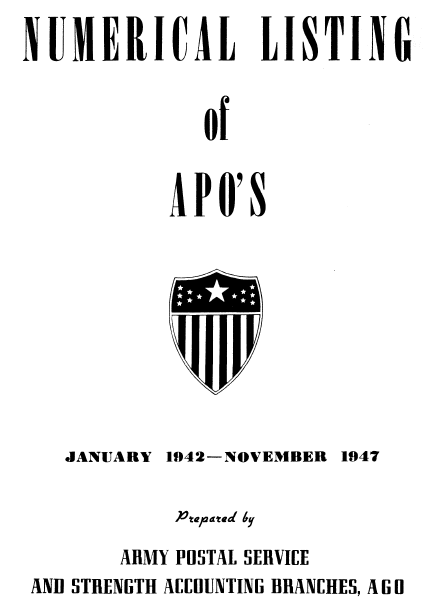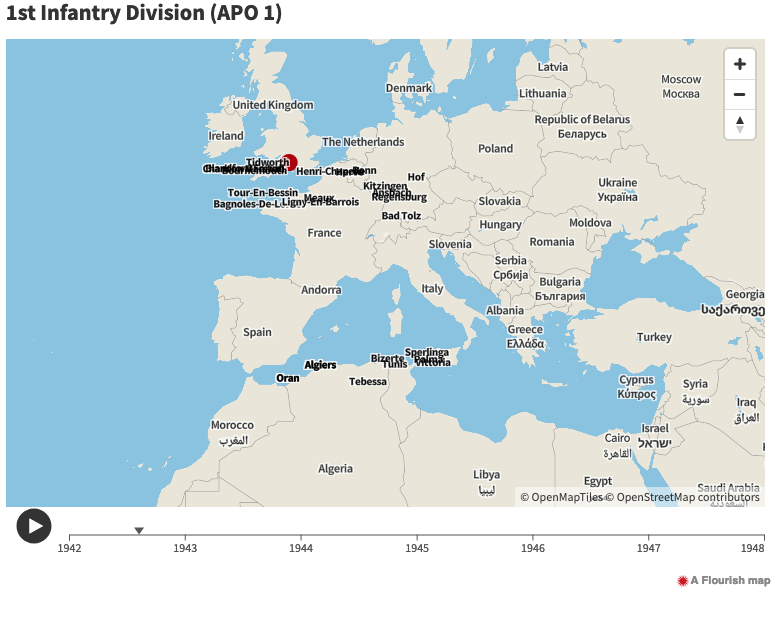WWII Army Post Office (APO) Locations provides a searchable, browsable database of United States Army Post Office locations during World War Two. This information was compiled and transcribed from the 1949 publication Numerical Listing of APO’s. There is also an Alphabetical Listing of APO’s, which may be useful for determining which APOs were located in a specific place during the war.
If you are interested in Fleet Post Offices used by the U.S. Navy, a full list of FPOs and locations is available on the Naval Heritage and Command website.
Note that more specific location information about APOs may be available in the print publications of Russ Carter, which can be purchased from the American Philatelic Society.
APO Types
Some APO numbers were assigned to specific units and followed their progress; some of these unit APOs are listed in Appendix I of the report. For instance, APO 1 was assigned to the 1st Infantry Division and its locations follow the progress of the division from North Africa to Sicily to France to Germany.
Many other APOs moved over time but their associated unit is yet unknown. For example, APO 51 moved 23 times during the war, but its unit is not listed in the appendix.
Other APO numbers were used to identify specific locations throughout the war. Borinquen Field in Puerto Rico (now called Ramey Air Force Base) was assigned APO 845 from May 1942 through November 1947.
Use the Database to search for specific APO locations
or browse the APO Location Maps
Project History
During research for the Leisure at War project, I encountered the digitized version of Numerical Listing of APO’s, originally published in 1949 by the Adjutant-General’s Office. Although it was made machine-readable through OCR, the text was in poor shape and provided unreliable search results.
To aid my own research and provide a clean listing of APOs for future researchers, I transcribed the entire list into a spreadsheet. I then used an automated geolocation service to identify the coordinates of each location. Many of the place names were not identified due to errors in the original document, phonetic and variant spellings, or era-specific names no longer in use. Missing geolocation data is being added through reference to WWII-era maps and other sources.
The full CSV file with geolocations is available for download, but please note that the file is a work-in-progress as additions and amendments are made.



